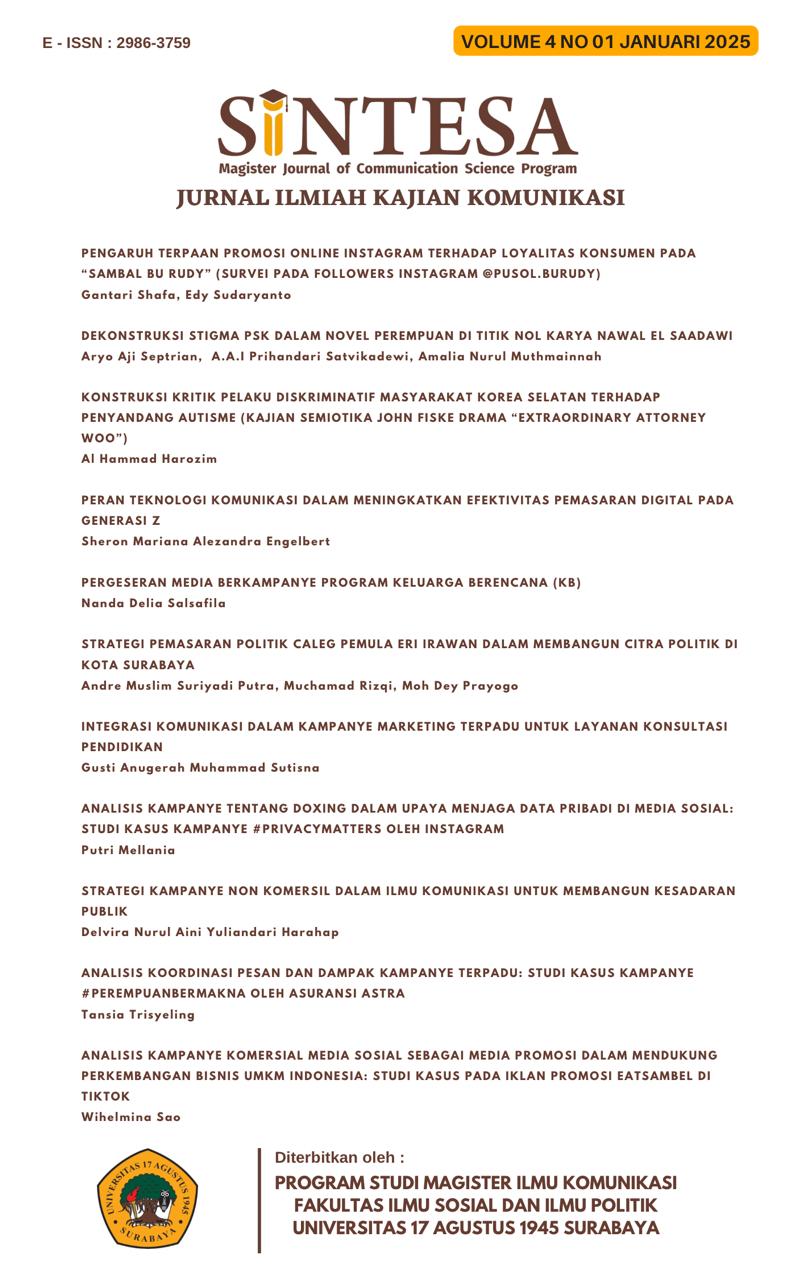PERGESERAN MEDIA BERKAMPANYE PROGRAM KELUARGA BERENCANA (KB)
DOI:
https://doi.org/10.30996/sintesa.v4i01.12651Abstract
This study examines the shift in media used in Indonesia's Family Planning (KB) Program campaigns, transitioning from analog to digital media. Initially, the KB program relied on television as the primary medium for delivering messages through public service advertisements (PSAs) with an audio-visual format. Television was considered effective due to its ability to reach a broad audience, utilizing a combination of visual elements, sound, and motion to make campaign messages more comprehensible and memorable. However, the advancement of information and communication technology has driven a transition towards digital media, such as social media, websites, and mobile applications, offering greater flexibility, wider reach, and interactivity with audiences. Digital media also allows for more personalized and relevant messaging, especially for younger generations who are more familiar with technology. Nonetheless, print media, such as brochures and booklets, still play a crucial role in reaching areas with limited internet access due to their simplicity and appealing visuals. This research employs a qualitative approach based on literature reviews to analyze the role of media transformation in KB Program campaigns. The results indicate that combining traditional and digital media is an optimal strategy for enhancing campaign effectiveness. This shift reflects an adaptation to the changing behavior of modern society and technological advancements, ensuring the KB Program campaigns remain relevant and inclusive across diverse regions.
Keywords: Family Planning Program; digital media; analog media; public service advertisements; media transformation














